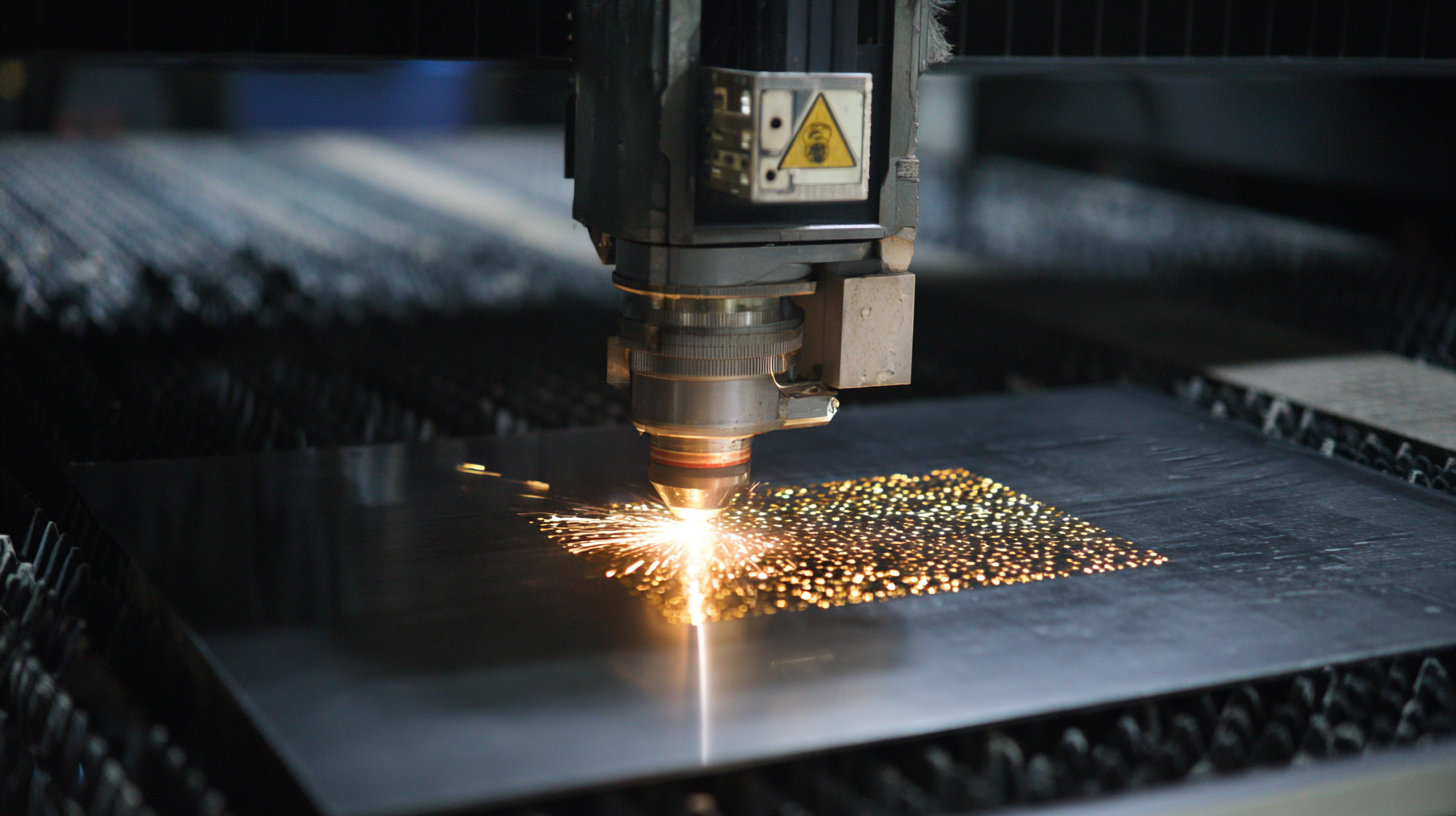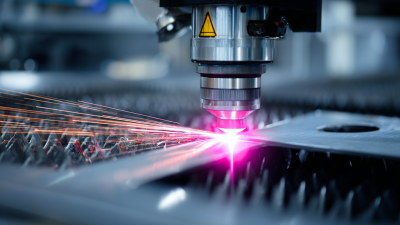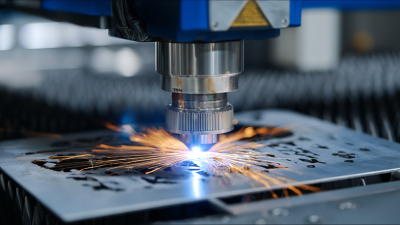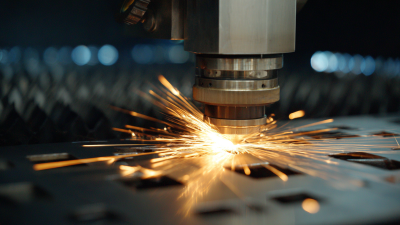Why Laser Cutting Tables are Revolutionizing the Manufacturing Industry: A Deep Dive
In recent years, the manufacturing industry has witnessed a significant transformation, thanks in large part to technological advancements such as the laser cutting table. According to a report by MarketsandMarkets, the global laser cutting machine market is projected to reach $6.9 billion by 2026, growing at a compound annual growth rate (CAGR) of 6.4% from 2021 to 2026. This remarkable growth underscores the increasing reliance on high-precision cutting methods that laser cutting tables provide, making them a pivotal element in modern manufacturing processes.

Experts in the field, such as Dr. Emily Tran, a leading voice in laser technology innovations, highlighted this shift, stating, "The integration of laser cutting tables is revolutionizing not just the efficiency of production lines, but the very way we approach design and prototyping." By enabling complex and intricate cuts with unmatched speed and precision, laser cutting tables are optimizing workflows, reducing material waste, and enhancing product quality across various sectors, from automotive to aerospace.
As manufacturers continue to seek ways to streamline operations and improve output quality, the adoption of laser cutting tables is set to play an instrumental role in shaping a more advanced and efficient manufacturing landscape. This deep dive will explore the pivotal impact of laser cutting tables on the industry, examining how they are not only improving processes but also paving the way for innovation in manufacturing capabilities.
Advantages of Laser Cutting Technology in Modern Manufacturing Practices
Laser cutting technology has ushered in a new era for the manufacturing industry, offering numerous advantages that traditional methods simply cannot match. One of the most significant benefits is precision; according to a report by MarketsandMarkets, the global laser cutting machine market is projected to grow from USD 3.5 billion in 2021 to USD 5.8 billion by 2026, reflecting a CAGR of 10.6%. This rise is largely driven by the technology's ability to achieve intricate designs with minimal waste, which is a crucial factor in today’s cost-conscious landscape.
Another key advantage of laser cutting lies in its versatility. The American Welding Society notes that laser cutting can handle a variety of materials, including metals, plastics, and fabrics, making it suitable for diverse applications across multiple sectors. This adaptability not only streamlines production processes but also enhances creativity in design, allowing manufacturers to experiment with complex geometries without significant additional costs. Furthermore, with the rise of automation in manufacturing, laser cutting tables integrated with software for design and production efficiency increasingly optimize workflow, leading to faster turnaround times and increased operational efficiency.
Innovative Applications of Laser Cutting Tables Across Diverse Industries
The manufacturing industry is witnessing a remarkable transformation with the adoption of laser cutting tables. These advanced tools are not only enhancing precision and efficiency but also opening new avenues across various sectors. According to a recent report by MarketsandMarkets, the global laser cutting market is projected to reach $5.49 billion by 2026, growing at a CAGR of 6.2%. This growth is indicative of the increasing demand for laser cutting applications in industries ranging from automotive to aerospace.

In the automotive sector, laser cutting is revolutionizing part fabrication by providing intricate designs that meet the stringent requirements of modern vehicles. For instance, manufacturers can efficiently produce complex shapes for lightweight components, which are essential for improving fuel efficiency. Similarly, the aerospace industry is leveraging laser cutting technology to achieve outstanding accuracy in components, reducing weight and enhancing performance. A report by Grand View Research highlights that the aerospace segment is expected to hold a significant share of the laser cutting market due to rising defense budgets and the growing demand for lightweight and durable materials.
Beyond traditional industries, innovative applications of laser cutting tables are also emerging in fashion and textiles, where designers are utilizing laser cutting to create unique patterns and intricate designs. By streamlining the production process and reducing waste, these tables contribute to sustainable manufacturing practices. As the technology continues to advance, its relevance will become even more pronounced, altering the landscape of manufacturing across multiple sectors.
Enhancing Precision and Efficiency with Advanced Laser Cutting Techniques
The integration of advanced laser cutting techniques is transforming the manufacturing landscape by enhancing precision and operational efficiency. As industries increasingly adopt laser cutting technology, businesses are experiencing remarkable improvements in the accuracy of intricate designs and cutting speeds. The development of fiber lasers, for instance, allows for thinner, more precise cuts across various materials, making them indispensable for sheet metal fabrication applications.
Tips for businesses looking to leverage these technologies include investing in the latest laser cutting machines that offer automation features and programmable cutting patterns, which can significantly reduce waste and production time. Another recommendation is to stay informed about trends in laser technology, such as ultrafast lasers and new materials compatibility, to remain competitive in the market.
Moreover, as the sheet metal fabrication services market is projected to expand significantly by 2034, companies must prioritize adapting to these advancements. Engaging with startups pioneering new laser applications could provide valuable insights and collaborations that drive innovation. By embracing these trends, manufacturers can ensure they remain at the forefront of the evolving production techniques.
Impact of Laser Cutting on Manufacturing Efficiency
Cost-Effectiveness and Sustainability of Laser Cutting Solutions
The manufacturing industry is experiencing a monumental shift with the adoption of laser cutting technology, particularly in terms of cost-effectiveness and sustainability. Laser cutting solutions not only streamline production processes but also significantly cut down on material waste and energy consumption. By employing high-performance lasers, manufacturers can achieve precise cuts, reducing the need for secondary processes that can be resource-intensive. This efficiency is crucial as companies strive to maintain competitiveness while meeting growing demands for eco-friendly practices.
Emerging trends in laser technology reflect an ongoing commitment to sustainability. Innovations are focusing on optimizing processes to minimize environmental impact. For instance, advancements in laser material processing enable the efficient machining of lightweight alloys, which are essential in high-performance and energy-efficient applications. Furthermore, the rise of smart connected systems enhances operational efficiency, ensuring that resources are utilized more judiciously. As manufacturers increasingly adopt such technologies, they not only stand to benefit economically but also contribute positively to sustainability goals within their industries.
Why Laser Cutting Tables are Revolutionizing the Manufacturing Industry: A Deep Dive - Cost-Effectiveness and Sustainability of Laser Cutting Solutions
| Parameter | Conventional Cutting Method | Laser Cutting Method |
|---|---|---|
| Initial Investment | Higher | Moderate |
| Material Waste | 20-30% | 5-10% |
| Energy Consumption | High | Lower |
| Precision | Moderate | High |
| Production Speed | Moderate | High |
| Setup Time | Long | Short |
| Environmental Impact | Higher | Lower |
Future Trends and Developments in Laser Cutting Technology for Manufacturing
The laser cutting technology sector is witnessing accelerated growth, propelled by the integration of advanced manufacturing practices and the digital economy. As industries move towards a more automated and efficient future, the demand for laser cutting systems, particularly automated laser tube cutting machines, is projected to soar. With the market anticipated to skyrocket from $865.53 million in 2024 to an impressive $1.82849 billion by 2032, manufacturers are increasingly adopting these innovative solutions to streamline production processes and enhance product quality.
Future trends indicate a strong push towards high-end, intelligent, and green manufacturing. The shift to a more sophisticated industrial ecosystem emphasizes the critical role of laser cutting technology in achieving these objectives. Enhanced precision, reduced waste, and adaptability to various materials position laser cutting as a key player in the evolving landscape of the manufacturing industry. As companies align their operations with governmental support for manufacturing upgrades, the laser equipment market is expected to expand significantly, reinforcing its importance in the global industrial arena.
Related Posts
-

Unlock Unlimited Possibilities with Custom Laser Cutting for Your Unique Projects
-

Unlocking Creativity with Custom Laser Cutting Techniques for Unique Designs
-

Unlocking the Future of Design: How Custom Laser Cutting is Revolutionizing Creative Industries
-

Emerging Trends in Stainless Steel Laser Cutting Technologies at the 138th Canton Fair 2025 in China
-

Exploring Laser CNC Innovations at the 2025 China 138th Import and Export Fair
-

The Future of Manufacturing with Metal Laser Cutting Technology Explained

